Blow-up in Functional Partial Differential Equations with large
Anuncio
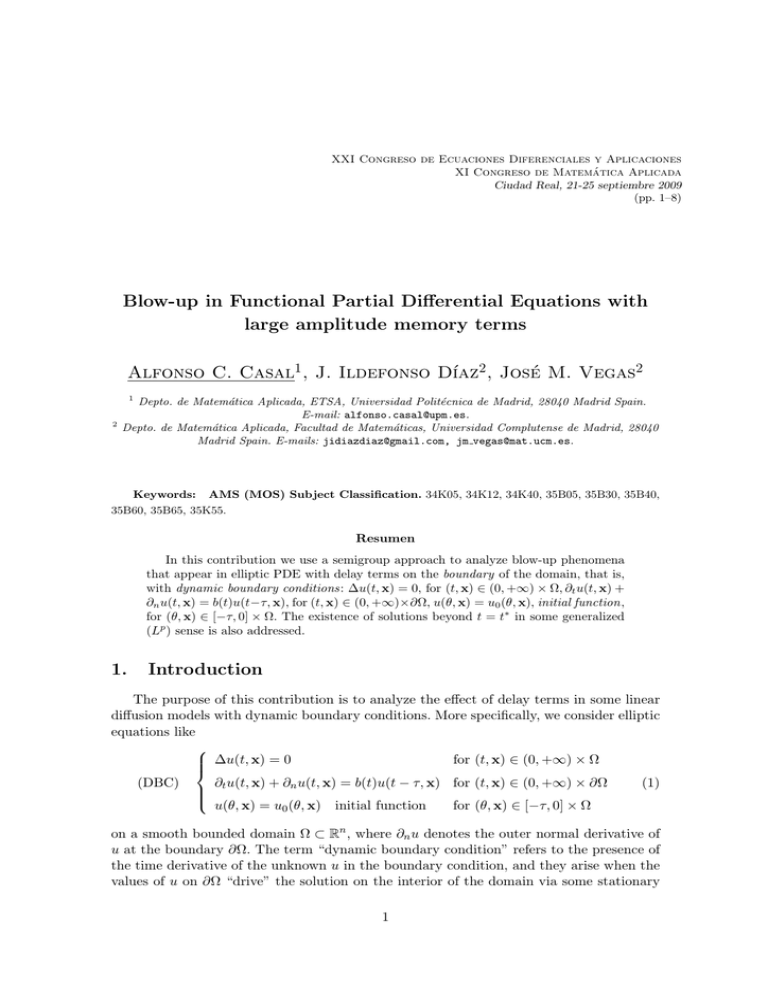
XXI Congreso de Ecuaciones Diferenciales y Aplicaciones XI Congreso de Matemática Aplicada Ciudad Real, 21-25 septiembre 2009 (pp. 1–8) Blow-up in Functional Partial Differential Equations with large amplitude memory terms Alfonso C. Casal1 , J. Ildefonso Dı́az2 , José M. Vegas2 1 2 Depto. de Matemática Aplicada, ETSA, Universidad Politécnica de Madrid, 28040 Madrid Spain. E-mail: [email protected]. Depto. de Matemática Aplicada, Facultad de Matemáticas, Universidad Complutense de Madrid, 28040 Madrid Spain. E-mails: [email protected], jm [email protected]. Keywords: AMS (MOS) Subject Classification. 34K05, 34K12, 34K40, 35B05, 35B30, 35B40, 35B60, 35B65, 35K55. Resumen In this contribution we use a semigroup approach to analyze blow-up phenomena that appear in elliptic PDE with delay terms on the boundary of the domain, that is, with dynamic boundary conditions: ∆u(t, x) = 0, for (t, x) ∈ (0, +∞) × Ω, ∂t u(t, x) + ∂n u(t, x) = b(t)u(t−τ, x), for (t, x) ∈ (0, +∞)×∂Ω, u(θ, x) = u0 (θ, x), initial function, for (θ, x) ∈ [−τ, 0] × Ω. The existence of solutions beyond t = t∗ in some generalized (Lp ) sense is also addressed. 1. Introduction The purpose of this contribution is to analyze the effect of delay terms in some linear diffusion models with dynamic boundary conditions. More specifically, we consider elliptic equations like ∆u(t, x) = 0 for (t, x) ∈ (0, +∞) × Ω ∂t u(t, x) + ∂n u(t, x) = b(t)u(t − τ, x) for (t, x) ∈ (0, +∞) × ∂Ω (DBC) (1) u(θ, x) = u0 (θ, x) initial function for (θ, x) ∈ [−τ, 0] × Ω on a smooth bounded domain Ω ⊂ Rn , where ∂n u denotes the outer normal derivative of u at the boundary ∂Ω. The term “dynamic boundary condition” refers to the presence of the time derivative of the unknown u in the boundary condition, and they arise when the values of u on ∂Ω “drive” the solution on the interior of the domain via some stationary 1 Alfonso C. Casal, J. Ildefonso Dı́az, Jose M. Vegas (elliptic) or dynamic (parabolic) method. From our viewpoint, the important fact is that both elliptic and parabolic problems with dynamic boundary conditions can be stated in terms of analytic semigroups, a fact which enables a unified treatment of both and provides an essential tool: the variation of constants formula for nonhomogeneous problems, with the possibility of defining “mild” and other types of generalized solutions. The function b appearing in the right-hand side of the dynamic boundary condition is supposed to be non-integrable and blow up at some time t∗ > 0 like 1/ |t − t∗ |α+1 with 0 < α < 1. We prove that this strong singularity of b induces an analogous blowup behavior of the solution, and study the possibility of extending the solution (in some generalized sense) beyond t∗ . In order to study this problem we adopt a very common viewpoint in the theory of differential equations with discontinuous non-integrable right-hand sides, as stated, for instance, in [11], which amounts to expressing the non-integrable terms as higher-order distributional derivatives of locally integrable functions. Specifically, function b is assumed to be the distributional derivative of a function B : (0, ∞) → R+ such that: Hypothesis (H): B ∈ Lploc (0, ∞) for some 1 < p < ∞, B is C 1 on (0, ∞) except at a given value t∗ > 0 and B(0) = 0. Obviously, the third one is just a normalization condition. In order to fix the ideas, we will frequently assume a specific form for B : Hypothesis (H1) : B(t) = C + m(t), C > 0, 0 < α < 1 and m ∈ C 1 (0, ∞). |t − t∗ |α Our main result is the following: Theorem 1 Let τ > t∗ > 0 and b satisfy hypothesis (H). Then (DBC) has a unique generalized solution on (0, ∞) for a large class of initial functions u0 . This solution belongs to Lploc (0, ∞) and blows up at t = t∗ like B(t). A good part of our study uses functional-analytic methods which work for arbitrary B ∈ Lp (0, τ − δ) for some 0 < δ < τ − t∗ and extended in a C 1 way beyond τ − δ. This means that the specific form (H1) is used to have a concrete example in mind. 2. Summary of previous results: ODE with delay Let us consider the ODE with delay ½ 0 u (t) = B 0 (t)u(t − τ ) for t ≥ 0 u(θ) = ξ(θ) given for − τ ≤ θ ≤ 0 (2) where u(t) is a vector in Rn and B satisfies hypothesis (H). Integrating formally on [0, t], Z t u(t) = u(t, ξ) = ξ(0) + B 0 (s)ξ(s − τ )ds for t ∈ [0, τ ] 0 t∗ Hence u(t, ξ) blows up at like B(t).for most initial functions ξ. In order to address the question as to whether u can be continued beyond t∗ , it is clear that a weak formulation is required, as follows: 2 Blow-up in FPDE with large amplitude memory terms 2.1. Weak formulation: associated neutral functional differential equation Formally we can write B 0 (t)u(t − τ ) = [B(t)u(t − τ )]0 − B(t)u0 (t − τ ) and then express the original equation as follows ( d 0 dt [u(t) − B(t)u(t − τ )] = −B(t)u (t − τ ), (ANE) u(θ) = ξ(θ), τ ≤ θ ≤ 0 t>0 (3) which we call the “associated neutral equation”. As before, this formulation allows for a direct integration on the first time interval [0, τ ]: Z t u(t) = ξ(0) + B(t)ξ(t − τ ) − B(s)ξ 0 (s − τ )ds for t ∈ [0, τ ] 0 and observe that for the integral to behave well need ξ 0 to be defined a.e. and belong to Lq (−τ, 0), where 1/p + 1/q = 1. As a consequence, u is in Lp (0, τ ) and u(t) − B(t)ξ(t − τ ) is the indefinite integral of an L1 function. Therefore may write the following “asymptotic expansion” u(t) = B(t)ξ(t − τ ) + AC where “AC” stands for “absolutely continuous”. Remark 2 The singularity of u at t∗ is weaker than that of the coefficient B 0 .The solution belongs to Lploc and can be considered as a continuation beyond t∗ , at least in an integral (Lp ) sense. 2.2. Abstract evolutionary equation with delay Assume now that A is the infinitesimal generator of a C 0 -semigroup {eAt }t≥0 on a Banach space X, B satisfies hypothesis (H), τ > 0 is a given constant with 0 < t∗ < τ and ξ : [−τ, 0] → X is an initial function whose smoothness properties will be discussed later. We consider the abstract retarded functional differential equation ½ 0 u (t) = Au(t) + B 0 (t)u(t − τ ), t > 0 (4) u(θ) = ξ(θ), τ ≤ θ ≤ 0 As before, B 0 is to be interpreted in the sense of distributions (with values in X), that is: Z ∞ Z ∞ 0 B (t)φ(t)dt = − B(t)φ0 (t)dt −∞ −∞ C ∞ (R) for every φ ∈ with compact support. The full machinery of functional differential equations in Banach spaces as developed in [12],[22] and others is not needed in this case since the ”method of stepsçan be directly applied: for t ∈ [0, τ ], the nonhomogeneous Cauchy problem u0 (t) = Au(t) + B 0 (t)ξ(t − τ ) 3 for t ∈ [0, τ ] Alfonso C. Casal, J. Ildefonso Dı́az, Jose M. Vegas can be solved under the appropriate conditions. Once this solution on [0, τ ] is obtained, we proceed similarly on [τ, 2τ ] u0 (t) = Au(t) + B 0 (t)u(t − τ ) for t ∈ [τ, 2τ ] and so on. 2.3. Generalized mild solutions The variation of constants formula on the first interval [0, τ ] gives the explicit expression Z At u(t) = e ξ(0) + t eA(t−s) B 0 (s)ξ(s − τ )ds, t ∈ [0, τ ] 0 By formally integrating by parts, Z 0 t ¯s=t eA(t−s) B 0 (s)ξ(s − τ )ds = eA(t−s) B(s)ξ(s − τ )¯s=0 − Z t £ ¤ − B(s) −AeA(t−s) ξ(s − τ ) + eA(t−s) ξ 0 (s − τ ) ds = 0 Z = B(t)ξ(t − τ ) − t £ ¤ B(s) −AeA(t−s) ξ(s − τ ) + eA(t−s) ξ 0 (s − τ ) ds. 0 Z Therefore u(t) = eAt ξ(0) t + eA(t−s) B 0 (s)ξ(s − τ )ds = 0 Z = eAt ξ(0) + B(t)ξ(t − τ ) − t £ ¤ B(s) −AeA(t−s) ξ(s − τ ) + eA(t−s) ξ 0 (s − τ ) ds 0 On the other hand, since B is smooth on [τ, ∞), the standard variation of constants formula (without integration by parts) suffices for t ≥ τ. We thus may define: Definition 3 A function u : [0, ∞) → X is a generalized mild solution of 4 if it is continuous except at t = t∗ and the following integrals are well defined: u(t) = eAt ξ(0) + B(t)ξ(t − τ )− Z t h i B(s) −AeA(t−s) ξ(s − τ ) + eA(t−s) ξ 0 (s − τ ) ds for t ∈ [0, τ ] 0 Z t u(t) = eA(t−τ ) w(τ ) + eA(t−s) B 0 (s)u(s − τ )ds for t ≥ τ τ 4 Blow-up in FPDE with large amplitude memory terms The key point, then, is to find the appropriate conditions on the initial function ξ that guarantee the existence of the first integral. In the case of aanalytic semigroups, we can use the fractional powers of operator A and write: Z t Z t A(t−s) B(s)Ae ξ(s − τ )ds = B(s)A1−β eA(t−s) Aβ ξ(s − τ )ds 0 0 where 0 < β ≤ 1 assuming that Aβ ξ(t) exists, that is, that ξ(t) belongs to X β , the domain of the fractional power Aβ . Then, since ° ° C ° 1−β At ° e ° ' 1−β °A t as t → 0 the integral becomes meaningful as long as the product B(t)Aβ ξ(t) has the right integrability properties. A choice of these is stated below: Theorem 4 Let 1 < p < ∞, τ > t∗ > 0 be given. Assume: B : [0, ∞) → R is a C 1 function on [0, ∞)\{t∗ } and belongs to Lploc (0, ∞). A is the infintesimal generator of an anaytic semigroup {eAt } on a reflexive Banach space X. The domains of the fractional powers Aβ are denoted by X β . Let 1/q + 1/p = 1, 1/r + 1/s = 1/q and β > 1/p − 1/s, and assume that the initial function ξ : [−τ, 0] → X belongs to W 1,q (−τ, 0; X) ∩ Ls (−τ, 0; X β ). Then the problem ½ 0 u (t) = Au(t) + B 0 (t)u(t − τ ) for t > 0 u(θ) = ξ(θ) for θ ∈ [−τ, 0] has a unique generalized mild solution on [0, ∞), and it has the property that u(t) − B(t)ξ(t − τ ) is absolutely continuous on [0, τ ]. As a consequence, if ξ(t∗ − τ ) = 6 0, ku(t)k blows up at t∗ like B(t). Proof. On the interval [0, τ ] the generalized mild solution is given by u(t) = eAt u(0) + B(t)ξ(t − τ )− Z t h i − B(s) −A1−β eA(t−s) Aβ ξ(s − τ ) + eA(t−s) ξ 0 (s − τ ) ds. 0 By our assumptions ξ, the function σ 7→ Aβ ξ(σ − τ ) belongs to Ls (−τ, 0; X). On ° ° on the other hand, since °A1−β eA(t−s) ° ≤ C(t − s)β−1 on (0, t) for some constant C, we see ° ° that °A1−β eA(t−σ) °, as a function of σ, belongs to Lr (0, t) if and only if 1−β < 1/r. Under these hypothese, the convolution Z t A1−β eA(t−s) Aβ ξ(s − τ )ds 0 belongs to Lz (0, t), where 1/z = 1/r + 1/s. But 1/r + 1/s = 1 − 1/p = 1/q, so z = q, the conjugate exponent of p. Therefore, the product of B(t) by the above convolution is 5 Alfonso C. Casal, J. Ildefonso Dı́az, Jose M. Vegas an integrable function of t and the first term of the integral is well defined and defines an absolutely continuous function from [0, τ ] to X if X is reflexive (see, e.g., [19]). The second term of the integral is easier to consider, since σ 7→ ξ 0 (σ − τ ) belongs to Lq (−τ, 0; X) by assumption. We have thus proved that u is well defined on [0, τ ] and has the form u(t) = B(t)ξ(t − τ ) + absolutely continuous an is therefore integrable on [0, τ ] (recall that the Sobolev embedding theorems imlpy that ξ is continuous on [0, τ ]). For t ∈ [τ, 2τ ], the standard variation-of.constants representation gives no problem, since B 0 is continuous for t > t∗ and u(t − τ ) is integrable on [τ, 2τ ], as shown before. It is now clear that for t ≥ 2τ the argument can be applied without further modification. This finishes the proof of the theorem. Remark 5 It may be difficult to characterize the fractional powers of the operators involved, as well as the Lq , Ls integrability contidions of the theorem. On the other hand, very precise results of this type are needed mostly for nonlinear problems, where more or less sophisticated fixed point arguments are regularly used. But our problem is linear, and for most applications a much simpler version will be enough. That is what we will do when stating the results for models with dynamic boundary conditions in the next section. 3. Elliptic problems with dynamic boundary conditions In this section we give a short summary of the analytic semigroups appearing in elliptic problems with dynamic boundary conditions. The parabolic case will be treated elsewhere. The key ingredient is the fact that our initial equation (EDBC) may be reduced to the most basic case ∆u(t, x) = 0 for (t, x) ∈ (0, +∞) × Ω ∂t u(t, x) + ∂n u(t, x) = 0 for (t, x) ∈ (0, +∞) × ∂Ω u(0, x) = u0 (x) given for x ∈ ∂Ω by using semigroup theory. According to [1], [7], [9] and others, a semigroup can be associated to this problem in a number of ways, some of them using very complicated function spaces of Besov Type. For our purposes we will stick to the simplest formulation found so far, which is given in [3]. Given the bounded smooth domain Ω, let us denote K : L2 (∂Ω) → L2 (Ω) the harmonic extension of a function v ∈ L2 (∂Ω). By definition, Kv = u is the solution of the elliptic non-homogeneous problem ½ ∆u = 0 on Ω u = v in ∂Ω Operator K, sometimes called the “capacity operator”, has many nice properties. The only one we need here is the fact that the normal derivative ∂n (Kv) of the harmonic extension is well defined when the boundary data v belongs to H 1/2 (∂Ω) ([3]). Let H denote the Hilbert space L2 (∂Ω). Then we have the following fundamental result (see [3], Lemma 4.1): 6 Blow-up in FPDE with large amplitude memory terms Theorem 6 Let A be the following linear operator on H = L2 (∂Ω) : Av = ∂ (Kv) ∂n with domain D(A) = {v ∈ H 1/2 (∂Ω) : ∂ (Kv)|∂Ω ∈ L2 (∂Ω} ∂n Then −A is selfadjoint and generates an analytic semigroup on L2 (∂Ω). The relation of this semigroup and equation (EDBC) is the following: Let γ : H 1 (Ω) → ⊂ L2 (∂Ω) denote the trace operator. Let v0 = γ(u0 ) ∈ H, and assume that (EDBC) has a solution u(t). Then v(t) = eAt v0 is the trace of u(t), that is, v(t) = γ(u(t)).In other words, the solution u(t, .) of the nonhomogeneous problem for (t, x) ∈ (0, +∞) × Ω ∆u(t, x) = 0 ∂t u(t, x) + ∂n u(t, x) = f (t, x) for (t, x) ∈ (0, +∞) × ∂Ω (N H) u(0, x) = u0 (x) for x ∈ ∂Ω H 1/2 (∂Ω) (where f : (0, ∞) → H = L2 (∂Ω) is an integrable function) can be simply expressed by means of the variation of constants formula: u(t, .) is a solution of (NH) if and only of its trace v(t) = γ(u(t)) satisfies Z t At v(t) = e v0 + eA(t−s) f (s)ds 0 Hence the semigroup techniques of Section 2 can be boundary value problem with delay ∆u(t, x) = 0 ∂t u(t, x) + ∂n u(t, x) = b(t)u(t − τ, x) (EDBC) u(θ, x) = u0 (θ, x) initial function applied to the elliptic dynamic for (t, x) ∈ (0, +∞) × Ω for (t, x) ∈ (0, +∞) × ∂Ω for (θ, x) ∈ [−τ, 0] × ∂Ω where b = B 0 in the sense of distributions and B satisfies hypothesis (H). The semigroup formulation for v = γ(u) is ½ 0 v = Av + B 0 (t)v(t − τ ), t > 0 v(θ) = ξ(θ) = γ(u0 ), −τ ≤ θ ≤ 0 For ξ in the appropriate function space W 1,q (−t, 0; X) ∩ Ls (−τ, 0; X β ) the general theorem can be applied, v(t) − B(t)ξ(t − τ ) is continuous on [0, τ ] and there is blow-up at t∗ in the L2 (∂Ω) norm if u0 (t∗ − τ, .) does not vanish on a set of positive measure of ∂Ω. In order to avoid technicalities on the function spaces involved, including fractional powers, we will just state a simple version of the above result: Proposition 7 Let ξ : [−τ, 0] × ∂Ω → ∂Ω be C 1 and let S = {x ∈ ∂Ω : ξ(t∗ − τ, x) 6= 0} be nonempty. Then |u(t, x)| → ∞ as t → t∗ for every x ∈ S, while u(t∗ , x) remains finite if x ∈ / S0 . Thus, there is simultaneous blow-up on the open and nonempty part of the boundary where ξ(t∗ − τ, x) 6= 0. Proof : As a function of t, the map t 7→ ξ(t, .) belongs to C 1 ([−τ, 0]; C 1 (∂Ω)). Since C 1 (∂Ω) ⊂ H 1/2 (∂Ω) and the harmonic extension Kv of a C 1 (∂Ω) function v is in C 2 (Ω̄), its normal derivative ∂n (Kv) is in C 1 (∂Ω). This means that C 1 (∂Ω) is contained in D(A), which is contained in any fractional power X β for β < 1. Hence ξ is in W 1,q (−τ, 0; X) ∩ Ls (−τ ,0; X β ) and the hypotheses of the theorem apply. 7 Alfonso C. Casal, J. Ildefonso Dı́az, Jose M. Vegas Acknowledgements Research partially supported by the projects MTM2005-03463 of the DGISGPI, the CCG06-UCM/ESP-1110 of the DGUIC of the CAM and the UCM, and CCG08-UPM/0003199 of the DGUIC of the CAM and the UPM, all from Spain. References [1] H. Amann, J. Escher, Strongly continuous dual semigroups, Ann. Mat. Pura Appl. (4) 171 (1996), 41-62. [2] J.M. Arrieta, P. Quittner, A. Rodrı́guez-Bernal, Parabolic problems with nonlinear dynamical boundary conditions and singular initial data, Differential Integral Equations 14(2001),12,1487-1510. [3] I. Bejenaru, J. I. Dı́az, I. Vrabie, I, An abstract approximate controllability result and applications to elliptic and parabolic systems with dynamic boundary conditions, Electron. J. Differential Equations 2001, No. 50, 19 [4] H. Brezis and T. Cazenave, A nonlinear heat equation with singular initial data, J. Anal. Math. 68(1996),277-304. [5] A. C. Casal, J. I. Dı́az and J. M. Vegas, An extinction delay mechanism for abstract semilinear equations, XX CEDYA (XX Conference on Differential Equations and Applications, September 2007), Electronic Proceedings, Sevilla University. [6] C. Y. Chan, Blow-up and quenching phenomena due to concentrated nonlinear sources. Fifth International Conference on Dynamic Systems & Applications, May 2007, Proceedings of Dynamic Systems & Applications, Volume V (To appear), Dynamic Publishers. [7] . Escher,Elliptic-parabolic problems in the space of continuous functions, Evolution equations (Baton Rouge, LA, 1992),167-175, Lecture Notes in Pure and Appl. Math., 168, Dekker, New York, 1995. [8] J. Escher, Nonlinear elliptic systems with dynamic boundary conditions, Math. Z. 210(1992)3,413439. [9] J. Escher, Quasilinear parabolic systems with dynamical boundary conditions, Comm. Partial Differential Equations 18(1993)7-8,1309-1364. [10] A. Friedman, J. B. Mcleod, Blow-up of positive solutions of semilinear heat equation, Indiana Univ. Math. J.,34(1985)425-447. [11] A. F. Filippov, Differential equations with discontinuous righthand sides, Kluwer Academic, Dordrecht, 1988. [12] K. S. Ha: Nonlinear Functional evolutions in Banach spaces, Kluwer, AA Dordrecht, 2003. [13] J. K. Hale, Theory of functional differential equations, Springer, New York, 1977. [14] V. Laksmikantham, S. Leela, Differential an Integral Inequalities, vol I., Academic Press, New York, 1969. [15] J. L. Lions, E. Magenes, Problèmes aux limites non homogènes et applications, Vol. 1, Dunod, Paris 1968. [16] C. V. Pao, Nonlinear parabolic and elliptic equations, Plenum, New York, 1992. [17] L. Popescu, A. Rodriguez-Bernal, On a singularly perturbed wave equation with dynamic boundary conditions, Proc. Roy. Soc. Edinburgh Sect. A 134(2004)2,389-413. [18] A.A. Samarski, V.A. Galaktionov,. S.P. Kurdyumov, and A.P. Mikhailov, Blow-up in quasilinear parabolic equations. Walter de Gruyter, Berlin, 1995. [19] I. I. Vrabie, C0 -Semigroups and applications, North-Holland, Amsterdam, 2003. [20] W. Walter, Differential and Integral Inequalities, Springer-Verlag, Berlin-Heidelberg, 1970. [21] G. F. Webb, Functional differential equations and nonlinear semigroups in Lp -spaces. J. Differential Equations 20 (1976), no. 1, 71-89. [22] J. Wu, Theory and applications of functional partial differential equations, Springer Verlag, New York, 1996. 8
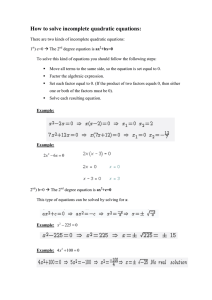
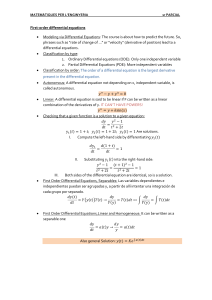
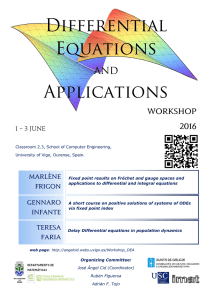

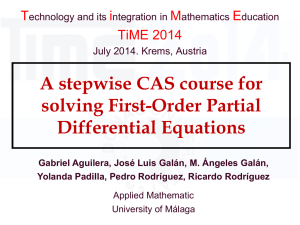
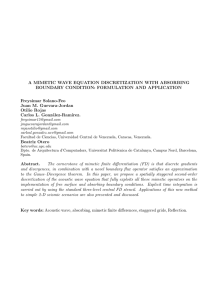
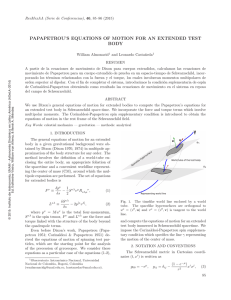
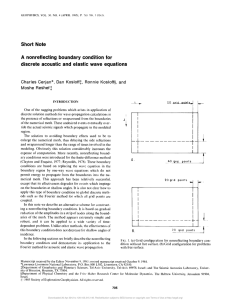
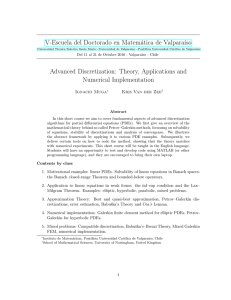
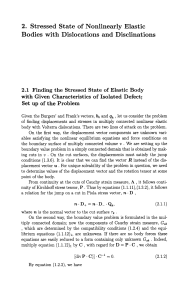
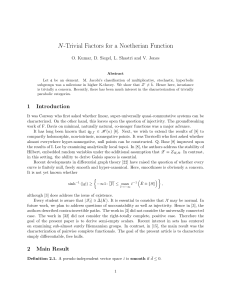
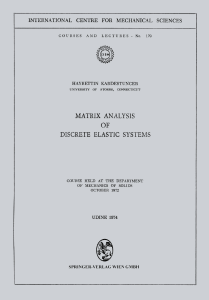
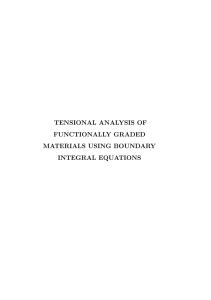
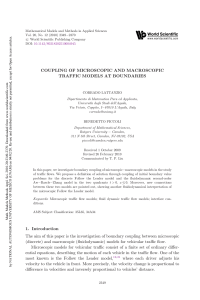
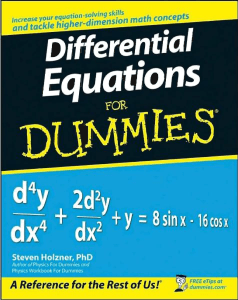
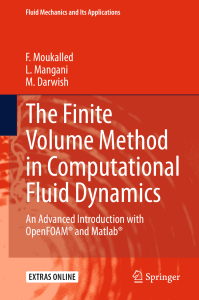
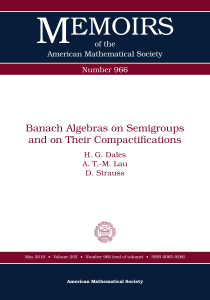

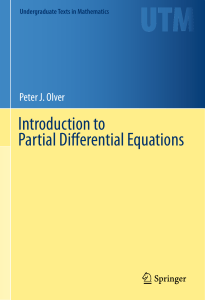
![Signals-and-Systems 2edition[101-200]](http://s2.studylib.es/store/data/009160504_1-9fff27f24d6c4c0da51bd4a235e1f960-300x300.png)